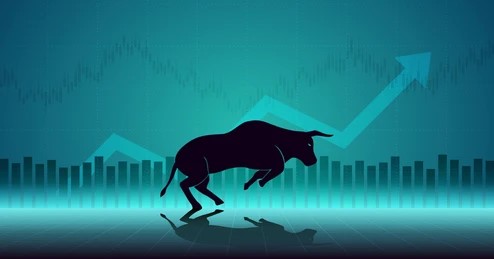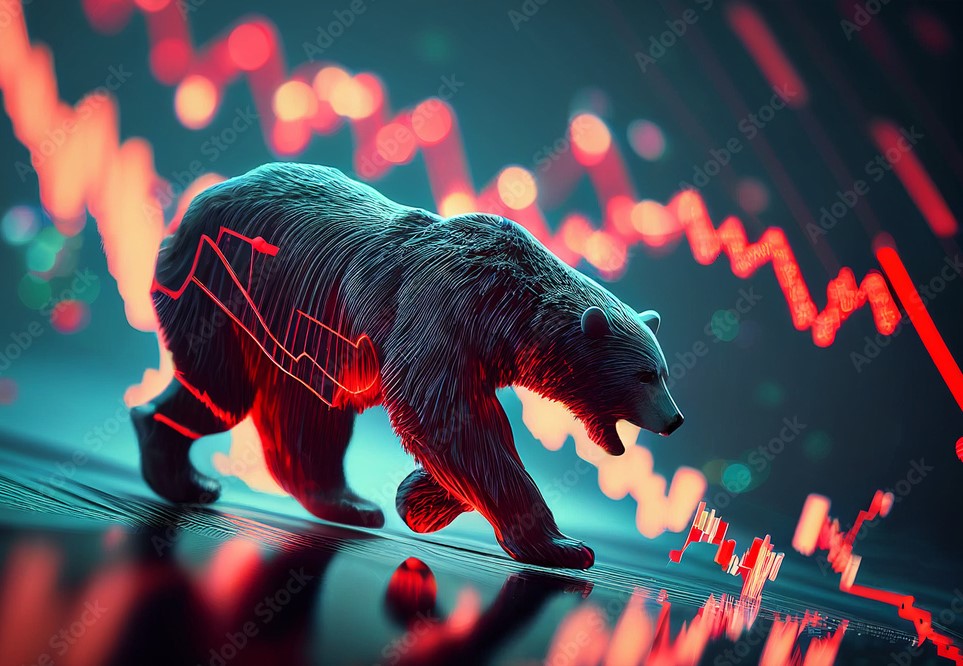Bull vs Bear Market: 5 Key Differences Every Investor Should Know
Within the domain of the stock market, the terms “Bull vs Bear Market” stand out as recurrent and significant. These symbolic phrases represent distinct market conditions, each characterized by unique traits and implications for investors. In this article, we will delve deeper into the comparison between the Bull vs Bear Market, unraveling the essential distinctions that every investor should have a solid grasp of.
Bull Market: The Optimistic Run

A Bull vs Bear Market encompasses a market phase marked by a surge in optimism, upward-moving stock prices, a boost in investor confidence, and an overarching positive view of the economic landscape. To delve deeper into what defines a Bull vs Bear Market, let’s take a closer look at the specifics.

1. Rising Stock Prices
In a bull market, stock prices are on an upward trajectory. This consistent increase in stock values typically spans across various sectors. Investors are enthusiastic about the potential for higher returns, and this optimism leads to a surge in buying activity.
2. Economic Growth
Bull markets often align with periods of economic expansion. During these times, the broader economy is performing well, businesses are thriving, and corporate profits are on the rise. This economic prosperity encourages investors to pour money into the stock market.
3. Investor Confidence
One of the defining features of a bull market is the high level of investor confidence. In such a market, investors believe that any temporary dips or corrections are just blips on the radar. They have faith in the market’s long-term potential for growth.
4. Positive Sentiment
Positive news and upbeat earnings reports are abundant during a bull market. This positive sentiment permeates the investment landscape, making investors more willing to take risks and invest in growth-oriented assets like stocks.
5. Long-Term Investment Potential
A bull market is often seen as an opportunity for long-term investors to ride the wave of growth. Investors may choose to hold onto their investments, anticipating even higher returns in the future.
Bear Market: The Pessimistic Decline
Conversely, a bear market is a period of pessimism, marked by falling stock prices, economic challenges, investor uncertainty, and an overall negative outlook. Here’s a more detailed explanation of what characterizes a bear market:

1. Falling Stock Prices
Discerning whether you are in a Bull vs Bear Market enables you to fine-tune your portfolio strategy. In a bull market, you may choose to favor growth investments, while in a bear market, the emphasis shifts towards diversification and defensive strategies, which take on greater significance.
2. Economic Challenges
Bear markets are often associated with economic challenges, such as recessions, high unemployment, or economic crises. These issues can lead to reduced consumer spending, declining corporate profits, and an overall sense of economic instability.
3. Investor Uncertainty
Investors in a bear market are often uncertain about the market’s future direction. They may fear further losses and become more risk-averse. As a result, they might engage in increased selling activity, contributing to the downward pressure on stock prices.
4. Negative Sentiment
Negative news tends to dominate the headlines during a bear market. Earnings disappointments, economic crises, or geopolitical tensions can all contribute to a general sense of pessimism. This negative sentiment can further erode investor confidence.
5. Defensive Strategies
In a bear market, investors often adopt defensive strategies to protect their portfolios. This may include reallocating investments into assets that are less sensitive to market downturns, such as bonds or defensive stocks.
Key Differences and Investment Strategies
Understanding the distinctions between bull vs bear market is crucial for investors. Here are some key differences between the two and the investment strategies associated with each:
1. Market Direction
Bull Market: Characterized by an upward trend in stock prices.
Bear Market: Marked by a downward trend in stock prices.
2. Investor Sentiment
Bull Market: Investors are optimistic and more inclined to take risks.
Bear Market: Investors are often pessimistic and tend to be risk-averse.
3. Economic Conditions
Bull Market: Typically corresponds to a period of economic growth and prosperity.
Bear Market: Often occurs during economic challenges, such as recessions or crises.
Bull Market: Investors often focus on growth stocks and long-term investments with the anticipation of higher returns.
Bear Market: Investors may consider defensive stocks, diversification, and risk management strategies to protect their portfolios from potential losses.
Bull Market: Investors usually have a higher risk tolerance due to the overall positive sentiment.
Bear Market: Investors tend to have a lower risk tolerance and prioritize protecting their assets.
Why It Matters for Investors
Understanding the dynamics of bull and bear markets is not just about terminology; it’s about making informed investment decisions. Here’s why it matters:
1. Portfolio Management
Discerning whether you are in a Bull vs Bear Market enables you to fine-tune your portfolio strategy. In a bull market, you may choose to favor growth investments, while in a bear market, the emphasis shifts towards diversification and defensive strategies, which take on greater significance.
2. Risk Management
Knowing the risk tolerance of each market scenario helps you avoid making hasty decisions that could lead to significant losses.
3. Long-Term Planning
Understanding that bull and bear markets are cyclical can help you plan for the long term. You’ll know that after a bear market comes a bull market, and vice versa.
4. Stress Reduction
Remaining attuned to market conditions can alleviate stress, ensuring that you are less caught off guard or anxious when Bull vs Bear Market sentiments undergo shifts.
In summary, the comparison between Bull vs Bear Market imparts valuable insights to investors. The ability to recognize the signs and characteristics of each market scenario is vital for making well-informed investment decisions. While a bull market presents growth opportunities and the potential for higher returns, a bear market necessitates a cautious approach, efficient risk management, and capital preservation strategies. Through a profound understanding of these market dynamics, investors can navigate the financial landscape more adeptly and adjust their strategies in response to evolving market conditions.
Summary
Understanding the bull vs bear market dynamics is a fundamental aspect of successful investing. It’s not about predicting the market’s every move but being prepared for whatever it throws your way. So, next time you hear about a bull or bear market, you’ll know exactly what it means for your investments.
